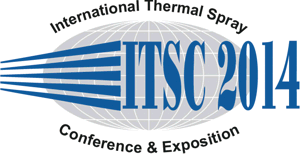
|
3744 |
|
Thursday, May 22, 2014, Hall H3 10:00 AM Modeling & Simulation 1 |
|
Investigation of three-cathode atmospheric plasma spraying by use of advanced diagnostics and numerical simulation |
|
Mehmet Öte* / Institut für Oberflächentechnik, Germany Kirsten Bobzin / Surface Engineering Institute (IOT), RWTH Aachen University, Germany Thomas Frederik Linke/ Surface Engineering Institute (IOT), RWTH Aachen University, Germany Stephan Zimmermann/ University of Federal Armed Forces Munich IPM (LPT), Neubiberg, Germany Jens Prehm/ Leibniz Universitaet Hannover IW, Garbsen, Germany Kai Möhwald/ Leibniz Universitaet Hannover IW, Garbsen, Germany Friedrich-Wilhelm Bach/ Leibniz Universitaet Hannover IW, Garbsen, Germany Hans Jürgen Maier/ Leibniz Universitaet Hannover IW, Garbsen, Germany Jochen Schein/ University of Federal Armed Forces Munich IPM (LPT), Neubiberg, Germany |
|
The general objective of this work is to determine the relationship between the process parameters and the characteristics of plasma sprayed coatings on the basis of advanced diagnostics and numerical simulations. A plasma torch simulation is an essential instrument for the determination of the correlation between the flow characteristics in the torch and the process parameters. A numerical model, which couples fluid dynamics, electro-magnetic and thermal relationships, will be implemented in order to investigate the resulting gas temperatures and gas velocities at the outlet of the torch. The calculated temperatures and velocity fields at the torch outlet will be used as input data for the free jet simulations. Advanced diagnostic methods will be employed in order to support numerical simulations and verify calculated particle and gas characteristics. In the area of advanced diagnostics the current work focuses on the development and testing of a new magnetic field measurement system and the investigation of radiation absorption within a plasma jet. The goal of the magnetic field measurement system is to obtain information about the plasma behavior inside a plasma torch by a spatially resolved measurement of the magnetic field outside the torch. In order to obtain plasma temperature information spectroscopic methods are commonly used. This will be applied to an existing computer tomography system in order to provide full 3D information about the temperature distribution in the plasma jet. Experimental and simulated data of particle temperatures and velocities will be input for coating formation simulations. In the field of numerical simulation of coating formation it will be described, how a self-developed coupled CFD-FEM coating formation simulation model, which is limited to date by the fact that simulations can be carried out only at a scale of 200 microns, is extended so that even macroscopic layers can be simulated. |